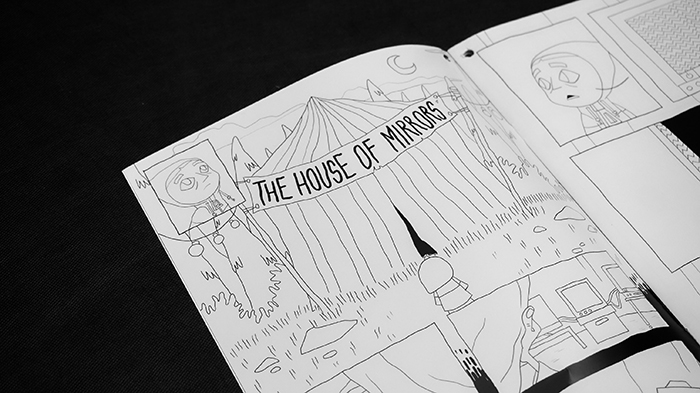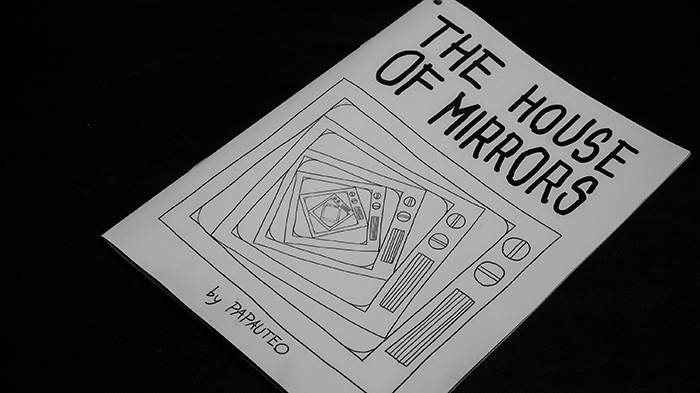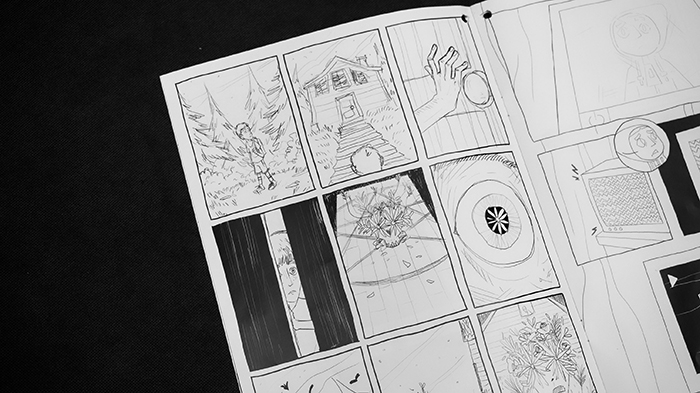The house of mirrors
By Matteo Repetto
Every day, streaming platforms release a huge amount of films and TV series, at a rate that until recently seemed impossible. This is happening at a time in which algorithms and AI are increasingly indispensable tools for the creation of this contents, which speed up the time and automatically detect our preferences. “The House of Mirrors” is a short-cryptic horror graphic novel that aims to show the reader how the stories we consume today are made up of common patterns, and that however absurd and distant they may seem to us, they are much closer to us than we think, and indeed are often a mirror of ourselves.







